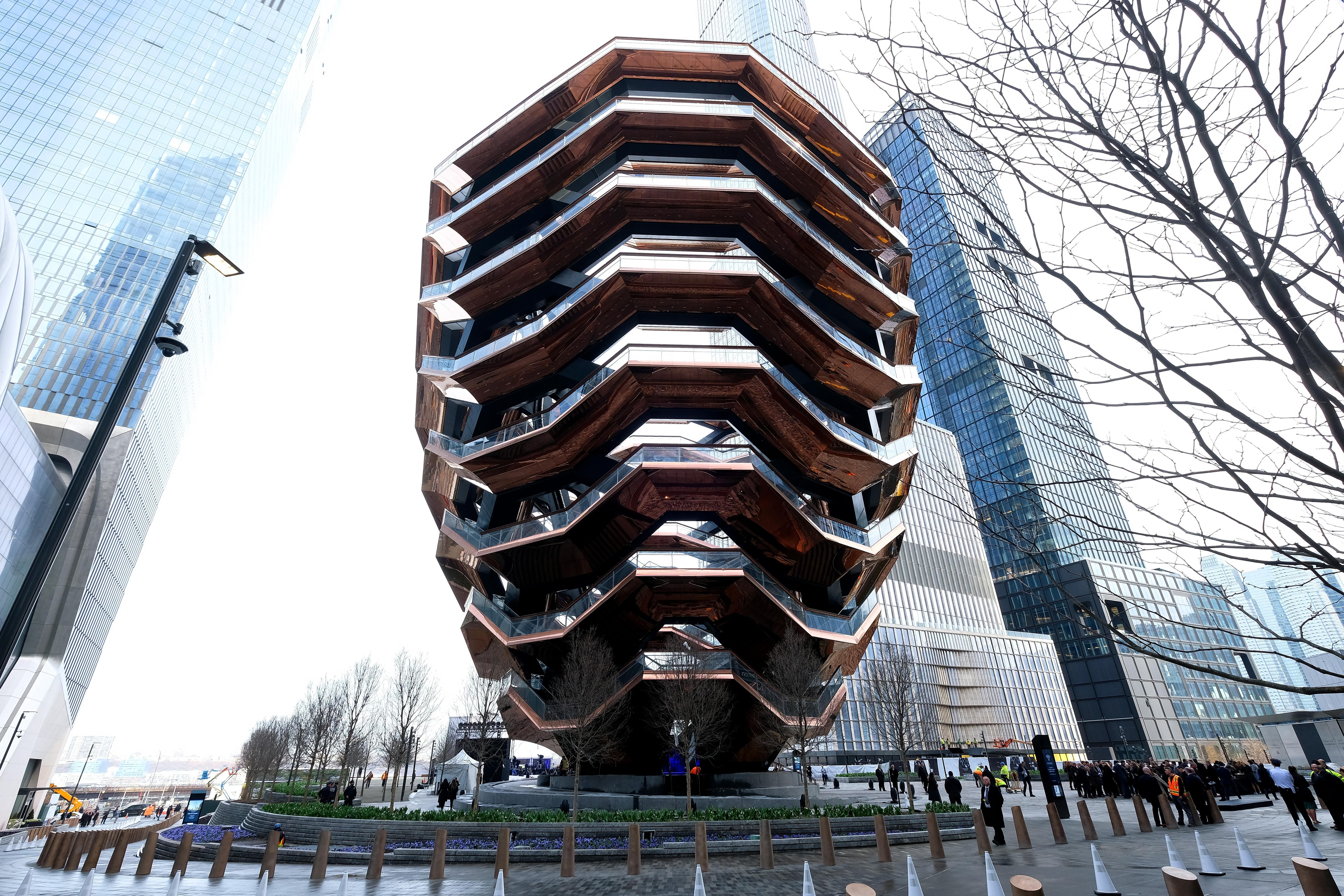There’s a concept in landscape architecture called a desire line. It refers to a path worn into the ground by foot traffic, in defiance of the planned curves of sidewalks and roadways. A desire line is where people want to walk, and each one reminds architects and developers that they can never really make people behave like the crisp printed figurines that populate their models.
Right now, no piece of American city is more crisp than Hudson Yards, a $25 billion development on the Manhattan waterfront that epitomizes the kind of tightly controlled central planning that takes shape at the hands of one developer, in this case Stephen Ross of Related Companies. The sense of cohesion begins with the architecture, extends into the public space, and culminates in an advanced information-collection program on air quality, traffic, trash, noise, and more—“a testing ground for applied urban data science,” as Shannon Mattern has written.
Hudson Yards opened to the public last week and already the first desire line has emerged—but it’s not in the landscape. It is a linguistic desire line, and its target is the development’s sculptural centerpiece, a made-for-the-’gram, free tourist attraction that Related has meekly, temporarily christened the Vessel. New Yorkers have already decided it resembles, more than anything, a shimmering shawarma.
This $200 million rotisserie reverie is the work of Thomas Heatherwick, the British starchitect-sculptor-engineer. It’s actually kind of cool: a vertiginous stack of 154 flights of stairs rising 15 stories into the sky. Heatherwick won Ross’ approval with his design in 2013; like so many of New York’s best cuts, it was imported from Italy. But activity-wise, it is less capicola than shawarma, an Arabized version of the Turkish word for turning, which is the very essence of the thing. Just as a shawarma rotates against the heat for an even roast, guests of the Shawarma rotate around the structure as they ascend to the top.
Ross told the Times in 2016 he wanted a year-round Christmas tree, something to rival Rockefeller Center. Instead he has the meat stick on 34th Street. Heatherwick says it was inspired by Indian step wells; others have seen M.C. Escher, or more prosaically, a wastebasket, a honeycomb, and a bedbug. But New Yorkers, I hope, will forever know it as the Shawarma.
The comparison was first made back in 2016 by Amy Plitt, the editor of Curbed New York. On Friday, Eater’s Carolyn Alburger forcefully revived the metaphor and it was picked up by the indefatigable, irascible blogger Jeremiah Moss, who happily reported that a local halal vendor had endorsed the idea. And why not? Each outward copper landing does seem to hang from Heatherwick’s work like the browned crust of a mammoth meat filet. The New York Post and Bloomberg both ran with the comparison.
To be fair, Related Cos. never actually named the thing: They’ve been using “Vessel” as, well, a placeholder since 2016, and briefly flirted with “New York’s Staircase.” But as Norman Foster learned when he unveiled plans for an enormous glass pickle on the London skyline in 1999, you can tell the public where to sit, when to visit, and what they can buy, but no amount of money will buy you a name people want to use. Perhaps by dawdling, Ross offered naming rights to the public, Boaty McBoatface–style. And the public thinks it looks like a kebab.
Resemblances aside, the Shawarma is the perfect name: a beloved street-food staple exerting its hold over the “billionaire’s fantasy city.” The Shawarma matters because it represents the imposition of a public voice on a project that has been roundly criticized for its private and inward-facing design. Twenty-five billion dollars will buy you a city, but nothing can buy you a name.
This post has been updated.
